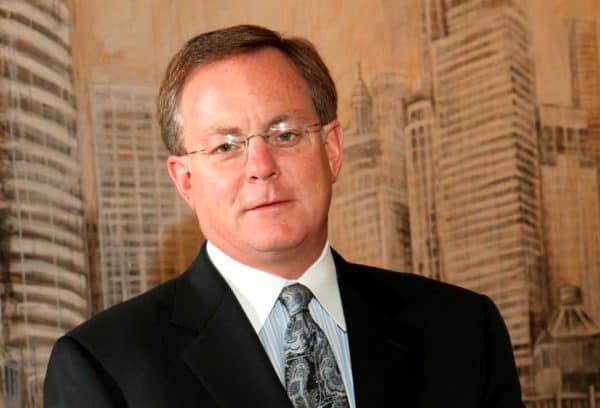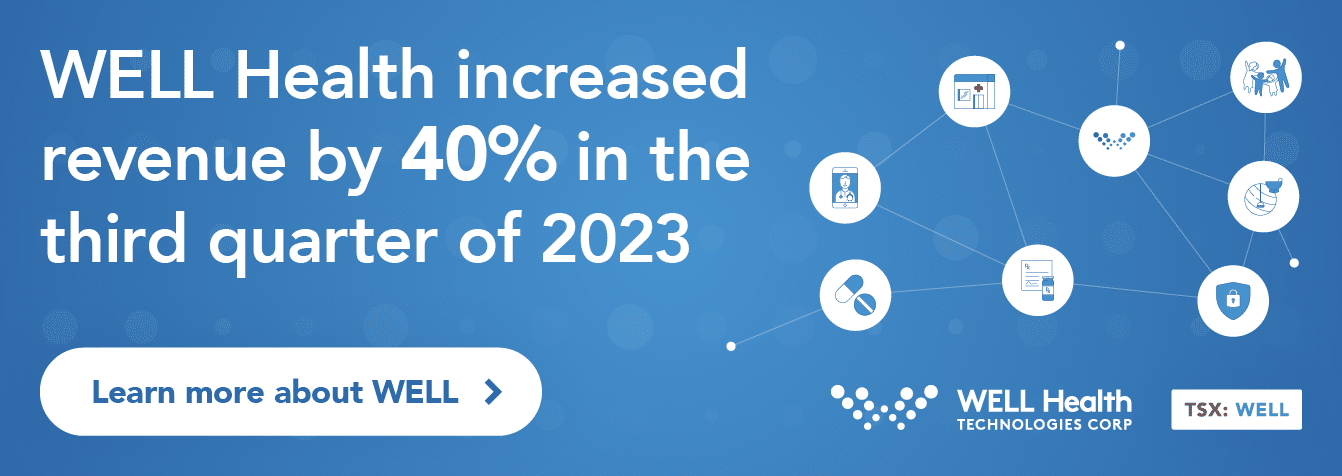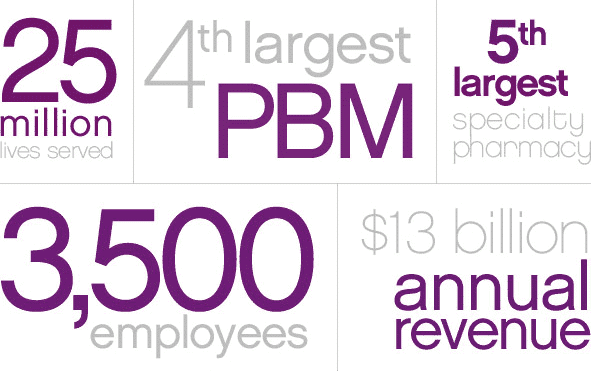
Ask the average Canadian to name our biggest success stories in the technology space and you will, despite their recent woes, hear the name Research in Motion nine out of ten times.
While its position in the consumer space puts it front and center for media, the story of Canadian tech does not end with RIM, or Waterloo, for that matter. In 2005, Mark Thierer joined the board of a small Milton, Ontario software company called Systems Xellence. Late in February, that company, now called SXC Health (TSX:SXC) and based out of Chicago, reported its fiscal 2011 results. SXC’s revenue grew a whopping 155% to $5 billion, from $1.9 billion in 2010. Earnings were way up too, increasing 45% to $166.4 million.
If Canadians aren’t noticing SXC, the rest of the world is beginning to; the company took home top spot in Fortune Magazine’s 2011 100 fastest-growing companies list, an award won in 2009 by, you guessed it, Research in Motion.
SXC Health, alongside US-based companies such as Medco and Caremark, is a leader in the Pharmacy Benefit Management space. PBM’s process and pay prescription drug claims and act as an intermediary between the health care system and the claimant. The space has grown rapidly; today more than more than 210 million Americans receive drug benefits administered by PBMs. Cantech Letter’s Nick Waddell recently talked to Mark Thierer about the amazing journey of SXC Health and his plans for the future.
Mark, first of all I’d just like to say congrats on a terrific year.
Thanks Nick. We’ve made a practice here of making commitments and then exceeding them. That was the case this last year, as it has been for the last several years. We have really been focused on keeping our promises and this last year was obviously a huge breakout for the company. We feel this has really put us on a launching pad. Even though we have had amazing growth the past several years, this last year was in many respects a defining one for us. We are now getting a look at much larger opportunities. I think we have graduated to the big leagues.
When you came to SXC in 2006, it was a company that most people had never heard of and it was arguably in a very competitive space. Today you are ranked first on Fortune Magazine’s list of the 100 fastest growing companies. What did you see that other people did not?
In 2005, I actually joined the company as a board member and attended two or three board meetings before the board formally approached me to join as the President and COO. It was actually apparent to me as a board member, and in my very early days as the President and COO, that we had something very special here. And I knew, early on in my tour here, that there was an opportunity to do something unique because of this unique technology footprint the company had built over a long period of time, candidly, preceding me. This technology footprint which was a dominant one in the claims processing world from a PBM software technology standpoint. That became this huge fulcrum that we were able to leverage, I would say around late 2006, early 2007, through this strategic planning drill that we went through. The thesis of that drill was “Can we bridge this business into a service business? Can we complement our dominant product position and transition the business into a larger market on the full service side?” I give a lot of credit to the team and their execution. But on the strategy front, I did see that we had something really special, this technology nucleus that we could use a springboard into some great growth. The one thing I didn’t see, to be very honest, was the magnitude. It has exceeded my initial expectations and that’s been really rewarding.
You are much more vertical than your immediate competitors such as CVS, Medco and Express Scripts. Do you think there is still room in the PBM space for SXC to continue the rate of growth you have established or will you have to become less vertical?
The fact of the matter is that this is a $330-billion dollar segment we compete in. So on a market share basis, we exited last year at $5 billion and our guidance suggests that we will be coming in around $6.8 to $6.9 billion dollar range in 2012. In terms of market share, we’re just scratching the surface, and we have a lot of running room. To be really clear we are vertical, we address a number of markets, but we are a PBM with technology as our calling card and we’re not going to change that strategy. We have so much running room in terms of new market opportunities and moving up market in the markets in which we compete. I expect that we can grow very rapidly just doing it the way we have been doing it for the last several years.
_________________________________________________________________________________________________________________
This story is brought to you by Verisante (TSX:VRS). The Canadian Cancer Society named Verisante Core a Top 10 Cancer Breakthrough of 2011. Click here for more information.
__________________________________________________________________________________________________________________
Do you expect that all PBM providers will be growing at the same time?
Not at our rate. We still do in some respects have the “law of small numbers” working for us. If you look at the merged entity between ESI and Medco, that will be in excess of a $100 billion corporation, and they will be unable to grow at much faster than a market rate because of their shear size. On the other hand, our business model is one you could characterize as highly disruptive. It is a market share driven model. We are winning organically pretty aggressively, then we are coupling it with this acquisition strategy and rolling up the middle market. So when we add a billion dollar account it is very material to our P&L. When a company like CVS Caremark adds a billion dollar account you could suggest it is immaterial to their P&L. We are going to be growing faster than the big guys, for sure.
In 2010 you were the winner of our Cantech Letter Award for Canadian Tech Stock Executive of the Year, and you were in the running this past year. You received a lot of credit for your effectiveness at growing through acquisition. I wanted to ask you about what was a very key acquisition. In 2008 you acquired National Medical Health Card Systems. Did that one get the ball rolling?
I actually think that was the watershed event here. When I talked about building a new strategic footprint and expanding from a pure product business into the services business, we had been building brick-by-brick a services business for almost a year and a half, prior to that acquisition. I took this idea to our board and they were fully supportive. Basically, we accelerated the build out by at least a couple of years by acquiring NMHC and when we did that we acquired nearly five-hundred clients, we acquired a mail facility, a specialty operation. In fact, we basically acquired a full service PBM and they were one of our customers. I would say more than any bet that SXC has made that the was our biggest, and we were all in on the full service model. That acquisition was really the dividing line. If you look at the P&L both from a revenue and an earnings standpoint, that’s where we really started to spike this business.
More recently, The HealthSpring deal was a very large acquisition. I know that Simon Mitchell, an analyst at TD Securities expressed some concern that after Cigna’s acquisition of HealthSpring that those revenues might be at risk. Can you touch on that acquisition?
The HealthSpring win, at the time that we won it, was a billion dollar new market win. It was the largest in the company’s history and we beat all the largest players for Healthspring’s business. Importantly, they’re a Medicare Part D Health Plan provider and we have a very dominant position in Medicare Part D, which is the seniors market. We’re processing approximately one out of every three Medicare Part D claims in this country. So we had this dominant footprint, which was persuasive to the HealthSpring leadership. We won that business and ran it all of 2011. HealthSpring, during that time, made an acquisition of a very large health plan called Bravo, which was about the same size as HealthSpring. HealthSpring has, subsequently, more than doubled and that has gone exceptionally well. We started Bravo this year and they have been live for about the last three months. What happened there was that Cigna acquired HealthSpring Bravo. We had a five year contract with HealthSpring that is a rock-solid contract, and HealthSpring has been public about honoring the contract. You could step back and say “What is the risk of that contract leaving prematurely?” I would say the risk is very low. Secondly, the strategic rational for Cigna acquiring HealthSpring was they bought them for their Medicare Part D Expertise and operating platform. Cigna really didn’t have a very strong Medicare Part D footprint out there. For them to turn around an effectively unplug the operating model they acquired, I’m not sure that makes good strategic sense. Our overall perspective on the acquisition is that it represents opportunity for us, not downside. The opportunity would be to expand our relationship with the broader Cigna, potentially well beyond what we have in place with just the HealthSpring component.
So that was a five year contract that was signed last year?
It was signed the year prior, roughly nine months prior to the start date. So it has been well over two years.
Shifting gears a bit, how do you feel that Pharmacy Benefit Mangement is improving healthcare in the United States in general?
I actually think the PBM industry is not very well understood and your question is a good one. I almost never get asked this. The fact of the matter is, the PBM industry in our healthcare system is very central to providing much needed insight and care management at the patient level. PBM’s are the front lines in providing safety at the member level. All the drug checks, drug utilization reviews, all the interventions where therapies actually get spit out and rejected because of mismatches or drug to drug interactions. This is what PBM’s do. They are a very important safety net in providing safe pharmaceutical care to members. It goes well beyond that when you start looking at the important interventions that happen around adherence and the importance of taking your medications on time and for the full regiment. Roughly fifty per cent of all medications that are prescribed are non-adherent, meaning you and I are culprits in that we don’t take the meds in the way our doctors prescribe. them. One of the key jobs of a PBM is to educate a member on the importance of staying adherent to their medications. Finally, there are some very complicated therapies, injectable therapies for conditions like Multiple Sclerosis or rheumatoid arthritis for instance, that are very high cost and the care management work that PBM’s including SXC do for those members is really very substantial. In many respects were are side by side with the physician on preaching the importance to a member, teaching them the administration of their medication and obviously corresponding with them on the importance of staying adherent and timely in the administration of these meds. This is something the industry, including us has to do a much better job of . We have to communicate to the market more broadly the important role we play in just the pure provision of health care.
This may be an odd question to ask, considering the dramatic success that SXC has had of late, but what do you worry about, what do you feel SXC needs to do better? What keeps you up at night?
That’s a great question. One of the things I personally take great pride in and credit for here is the team we have fielded. I would stack our management team up against any of the biggest players in the market. We have a world class management team, so I don’t worry about the guys and gals we have on the team making good decisions. or knowing what to do. They are highly experienced in their respective areas. The thing I worry the most about, and I worry about this all the time, is how are we going to continue to stay two and three steps ahead of this industry? Specifically, what we are focused on this year, to do just that is two important initiatives.
Can you tell us a bit about those?
The first is all around innovation. How do we take this head start that we have had for years in this industry as the innovation leader in the PBM segment and put it on steroids and lap the field by becoming far and way the market leader in innovation? What we have done, effective in January, is built out a new innovation here, called the Office of Innovation. We put our most tenured developer, who is an industry recognized leader in technology research in the PBM space, named John Romza in charge of this. We have formed an entire organization around John dedicated to one thing, and that is focusing on the future and innovating products that are new to the world in the PBM space. He’s not burdened with day to day work, he doesn’t run the day to day factory or the day to day IT operations. He is focused on breakthrough innovation that will change the game in the next two and three years for our customers. So, we are putting a big bet out there in innovation. But I am not worried about it, I would say I am excited about it. We have made big dollar investments and investments in people in this area.
And the second initiative?
The second area is maybe a little closer to the flame, and that’s just ensuring that we are providing world class customer service at all times. We have a new initiative this year called Clients For Life. We have modified our compensation plans inside the business. Everybody is the company is paid on customer satisfaction. Whether you are touching a client from a mail operation, or you are an account manager, or you are just providing invoices through our finance shop, everybody who touches a client is now compensated on client satisfaction. We have built a dedicated program around this notion of Clients For Life. This really defines the business relationship we are setting out to establish with all our clients. It’s my view that if we can couple the industry’s best technology solution with the industry’s best service solution, that’s a pretty bulletproof mix. Then, on top of that, we wrap it up with this notion of being in front of the industry from an innovation standpoint. Clients want to be working with people who are setting the pace in terms of breakthrough thinking and new introductions. Those are things we are really focusing on this year, Nick.
____________________________________________________________________________________________________________________

_____________________________________________________________________________________________________________________
Leave a Reply
You must be logged in to post a comment.







 Share
Share Tweet
Tweet Share
Share




Comment